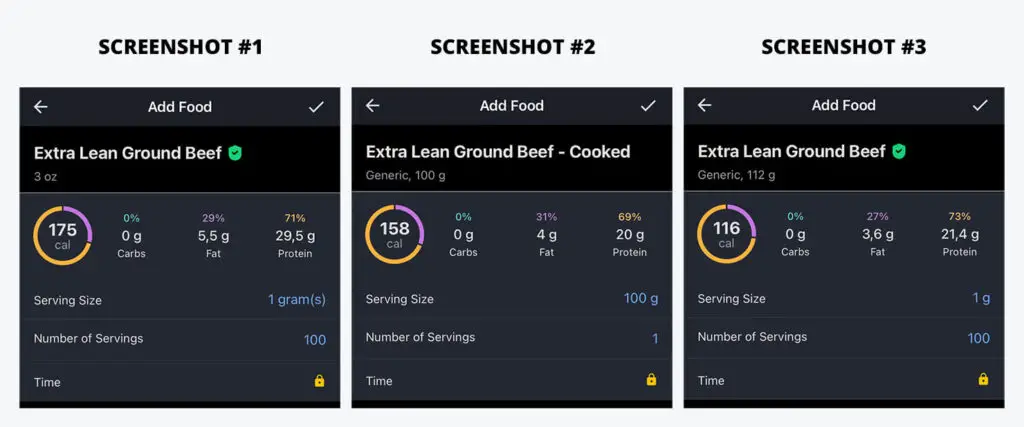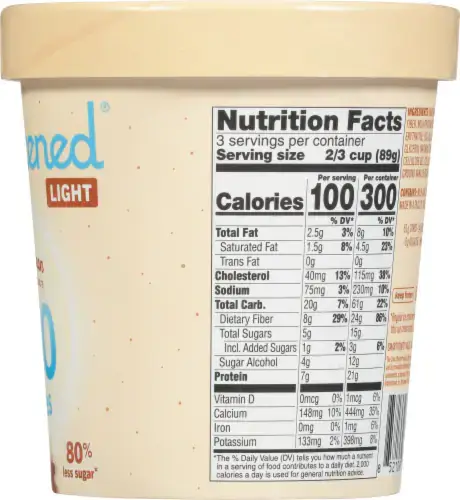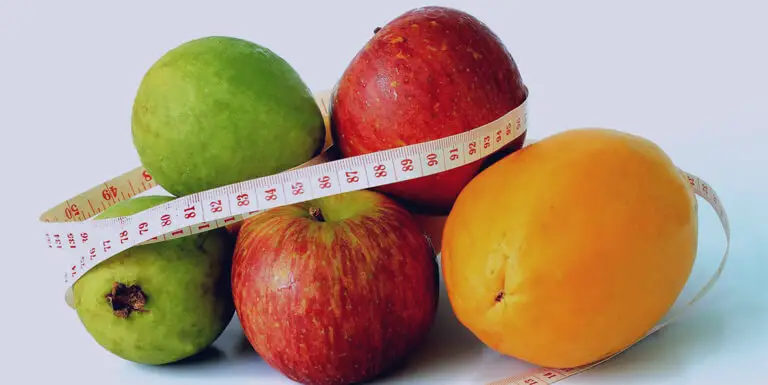7 Reasons You Are Hitting Macros But Not Calories (How to Fix It)
Are you hitting your macros but not your calories?
It can be frustrating when you seem to do everything right, but the numbers just don’t add up.
The truth is that there are a few common reasons this could be happening.
In this article, I’ll explain the reasons why there are discrepancies between macros and calories. I’ll also show you how to help ensure you hit your macros and calories more precisely.
But first, let’s cover the basics.
- What are Calories and Macros?
- 7 Reasons You Are Hitting Your Macros But Not Calories
- How to Make Sure You Hit Your Macros and Calories
- Frequently Asked Questions About Hitting Macros But Not Calories
What are Calories and Macros?
Calories are the unit of energy in food. They’re a measure of how much energy your body gets from eating or drinking something.
Calories are necessary to survive and support our bodies’ basic functions.
By consuming fewer calories than you use, you can create a calorie deficit and lose weight.
If you consume more calories than you burn, you’ll gain body weight.
And by consuming just enough calories to support your body’s needs, you can maintain your weight.
The next term, macros, is short for macronutrients.
Macronutrients are what make up the calories in the foods you eat and are essential nutrients needed for survival.
There are three macronutrients:
- Carbohydrates
- Protein
- Fats
Each macronutrient has a different role in the body and contains a different amount of calories per gram:
- 1 gram of carbohydrates contains 4 calories
- 1 gram of protein contains 4 calories
- 1 gram of fat contains 9 calories
With this in mind, it is mathematically impossible to hit your macros without also hitting your calories. Both are related, so it’s not possible to hit one without the other.
This means that if you’re eating the right amount of macros but not hitting your calorie goals, something else is going on.
Let’s take a look at some of the main reasons this could be happening.
7 Reasons You Are Hitting Your Macros But Not Calories
There are different reasons you might be hitting your macros but not your calories.
Some of the common ones are:
- Focus on Hitting Specific Macro Ratios
- Inaccurate Macronutrient and Calorie Data in Calorie Tracking Apps
- Not Accounting for Macros from Alcohol
- Rounded Macronutrient Calculations in Tracking Apps
- Nutrition Label Rounding Rules
- Not Counting Calories From Fiber
- Not Counting Calories From Sugar Alcohols
Let’s explore each of these in more detail.
Focus on Hitting Specific Macro Ratios
This is a simple one, yet it’s a mistake that some people make.
They think that as long as they hit their specific macro ratios, they’ll be fine.
If you’re trying to hit a specific ratio of macros (like 40/40/20 – protein, carbs, fat), then it’s entirely possible that you could be hitting your “macros” (ratios) but not your calories.
For example, if you’re eating 2000 calories worth of food that consists of 800 calories from carbs, 800 calories from protein, and 400 calories from fat, you’re technically hitting your macro ratios.
But what if your goal is to eat 2500 calories a day?
You would be 500 calories short, and not hitting your calorie goals.
Therefore, you need to make sure you’re eating enough food to hit your calories, in addition to your macro ratio targets.
Inaccurate Macronutrient and Calorie Data in Calorie Tracking Apps
Inaccurate information in calorie tracking apps is probably the most common reason people are hitting their macros but not their calories.
Calorie tracking apps like MyFitnessPal offer people an easy-to-use solution to monitor their calorie and macro intake and make sure they’re staying on track. However, these apps often rely on crowdsourced data, which means that mistakes can slip through the cracks.
For example, it’s not uncommon to see foods listed as containing 100 calories when they actually have 0 macros or the numbers are just plain wrong. This is obviously mathematically impossible, and it’s something that users need to be aware of.
Let’s look at some examples.

The image above shows three screenshots I took from my MyFitnessPal account when I was looking to track calories and macros for 100 grams of Extra Lean Ground Beef (raw and cooked).
Let’s do some maths and see what’s going on here.
SCREENSHOT #1
- Macro and calorie results displayed: 0 g of carbs + 5.5 g of fats + 29.5 g of protein = 175 calories
- Actual results: 0 g of carbs + 5.5 g of fats (49.5 calories) + 29.5 g of protein (118) = 167.5 calories
SCREENSHOT #2
- Macro and calorie results displayed: 0 g of carbs + 4 g of fats + 20 g of protein = 158 calories
- Actual results: 0 g of carbs + 4 g of fats (36 calories) + 20 g of protein (80) = 116 calories
SCREENSHOT #3
- Macro and calorie results displayed: 0 g of carbs + 3.6 g of fats + 21.4 g of protein = 116 calories
- Actual results: 0 g of carbs + 3.6 g of fats (32.4 calories) + 21.4 g of protein (85.6) = 118 calories
You see how different the results can be, even for the same food item!
This is just one example of how inaccurate calorie and macro data can be in tracking apps.
Only the third screenshot above is accurate, and even then it’s only off by a small margin.
Therefore, I recommend you always have to double-check the macros and calories listed for each food item and make sure they make sense.
Even if you scan the barcode scanner, you still need to make sure that the numbers match up. This is because the first person who added the food to the database could have made a mistake.
So, while calorie tracking apps can be a helpful tool, users need to be careful and double-check the data before relying on it too heavily. Alternatively, custom-made calorie trackers like the one I made in Google Sheets, can be used.
Not Accounting for Macros from Alcohol
Another common mistake people make is not accounting for the macros from alcohol.
Alcohol is technically a macronutrient, but it’s not one that’s typically tracked by people trying to hit their macros.
Alcohol contains a lot of calories – 7.07 per gram, to be exact.
On top of that, most calorie tracking apps don’t convert the alcohol calories into macros, such as carbohydrates, you just see them as “empty” calories or zeros across the board.
This can obviously throw off your whole macro count for the day and make it seem like you’re not hitting your calories when you are.
Therefore, if you’re drinking alcohol, make sure to account for the calories and macros in your tracker and convert them to the appropriate macronutrient, for example, carbohydrates.
Rounded Macronutrient Calculations in Tracking Apps
This one is similar to the last point but worth mentioning separately.
When you’re tracking macros, the app will often round up or down to the nearest whole number for the macros.
For example, if you eat a food that has 23.45 grams of fats, the app will often round it up to 24 grams of fats.
While this might not seem like a big deal, it can add up over time and affect your macro goals.
You can try using an alternative app that doesn’t round up or down and offer more accurate macro tracking with decimal points.
Nutrition Label Rounding Rules
This one is a bit more complicated and has to do with the food industry itself.
The food standard authorities around the world have different requirements for food nutrition labels.
For example, the United States Food and Drug Administration (U.S. FDA) in their Food Labeling Guide outlines rules on how to round nutrition labels depending on the nutrient and their value (1).
Here is a summary of the rounding rules for the major nutrients.
| Nutrient | Rounding Rule |
|---|---|
| Calories | <5 kcal round to 0 kcal ≤50 kcal round to nearest 5 kcal >50 kcal round to nearest 10 kcal |
| Fats | <0.5 grams round to 0 grams <5 grams round to nearest 0.5 grams ≥5 grams round to nearest 1 gram |
| Carbohydrates | <0.5 grams round to 0 grams <1 gram show as “less than 1 gram” ≥1 gram round to the nearest 1 gram |
| Protein | <0.5 grams round to 0 grams <1 gram show as “less than 1 gram” or round to 1 gram ≥1 gram round to the nearest 1 gram |
NOTE
The last revision date of the food labeling guidance document referenced in this article was January 2013. The U.S FDA may have updated its guidance since then.
On a side note, food producers regulated by the US FDA are allowed to have an up to 20% margin of error when it comes to the values on their nutrition labels (2).
This does not really affect the numbers you see on the label itself but rather the accuracy of those numbers.
Other countries around the world have slightly different food standard authority requirements but we will not get into that topic in this article.
The takeaway here is to be aware that discrepancies between the numbers on food nutrition labels and the actual amount of nutrients in the food are possible.
Not Counting Calories From Fiber
There is also variance in the way fiber is reflected in the overall calorie count.
Some count the grams of dietary fiber towards carbohydrates while others do not.
Instead, they separate fiber into different fiber types such as soluble, insoluble, and resistant starch. Each of which has varied nutritional values.
Then there are some people who don’t count fiber at all and see it as a freebie calorie and macronutrient-wise.
As a result, you get different information in terms of the calorie and macronutrient content of foods depending on what resource you’re looking at.
Of course, getting to count every gram of food while taking into account all the different types of fiber and their nutritional value would be the most accurate way to hit your calorie and macro goals. But that is not realistic for most people.
My recommendation is to count fiber as carbs and include the grams of fiber in your total carb count for the day or don’t count them at all.
I personally count fiber as carbs because it’s the approach that I find to be the most accurate and simplest to follow.
Most importantly you have to keep it consistent so that you can accurately track your progress.
Not Counting Calories From Sugar Alcohols
Similar to fiber, sugar alcohols would count towards your carbs but may not be included in the total calorie count.
Sugar alcohols are sugar-free or low-calorie sweeteners such as sorbitol, xylitol, and erythritol that can be found in some processed foods, usually sweetened snacks, low-calorie ice cream, etc. Their calorie count can vary from 2.6 calories per gram to almost zero calories per gram.

For example, looking at the nutritional information of Enlightened Ice Cream, we can see that one serving (2/3 cups or 89 grams) has a total of 100 calories.
However, when we look at the macronutrient breakdown and do the manual calorie count, here is what we get:
- Fats: 2.5 grams X 9 calories = 22.5 calories from fats
- Carbohydrates: 20 grams X 4 calories = 80 calories from carbs
- Protein: 7 grams X 4 calories = 28 calories from protein
So, the total manual calorie count would be 130.5 calories per serving (not 100 calories). For the total tub of ice cream, it would be 391.5 calories (not 300 calories).
To summarize, the discrepancies between macros and calories in the last two aforementioned cases are from fiber and sugar alcohols being counted towards carbohydrate content but not always included in the calorie count.
You can clearly see these discrepancies when you count calories manually based on the nutrition label and the grams of each macronutrient listed.
All these differences might not seem like a lot but they can quickly add up over the course of a day and result in you hitting your macros but not calories.
Now let’s discuss how to minimize these discrepancies so that you can more accurately hit your calorie goals.
How to Make Sure You Hit Your Macros and Calories
Here are some of the ways you can make sure you hit your macros and calories more accurately if you are currently hitting macros but not calories.
Pick Foods That Have Been Verified
The first and the simplest way is to be more selective with the foods that you track.
If you are using a food tracking app, make sure to pick foods that have been verified for accuracy.
For instance, look out for a verification note, check mark, star, or something similar.
This means that the food item has been verified as accurate by the app’s team.
Use “USDA” Modifier When Searching Whole Foods
When searching for whole foods, search using a modifier such as “USDA”.
This will give you a more accurate result of the nutrient content in that food product since the USDA (United States Department of Agriculture) food database is considered to be one of the most reliable sources when it comes to whole foods.
Ensure the Information Matches Actual Nutritional Facts
When tracking a product with a barcode on it, you would typically use a barcode scanner feature to quickly and easily retrieve the nutritional information of the product by scanning the barcode. However, you still need to check that the food item you have in front of you matches what is being displayed in the app.
This is important because sometimes, the first person who entered the specific food into the database might have made a mistake.
So, make sure that the information on the app matches what is actually on the nutrition label of the product.
If it doesn’t match, you can either update the information or simply create a new food item with accurate information.
Do a Quick Math on Food Items You Enter
For food items that you enter manually or by using a barcode scanner, it is always a good idea to do quick math on the macros and calories to make sure they add up.
So, make sure to check that the grams of fat, carbs, and protein matches the corresponding calories from those macronutrients.
You can use a spreadsheet like the one below to do your calculations quickly.
Make a Copy of It the Spreadsheet
Use Your Own Macro Meal Plan Spreadsheet
Lastly, you can use your own macro meal plan spreadsheet with a food database that includes accurate nutritional information.
It would allow you to create a meal plan that is tailored to your specific calorie and macro goals, and track this information more accurately since you will be the one entering all the data.
Creating such a spreadsheet from scratch can be time-consuming, but you can use my free macro meal plan spreadsheet template as a starting point.
Get Macro Meal Plan Template in Google Sheets
This template includes a food database with common foods that I have verified for accuracy using the USDA food database (3).
Frequently Asked Questions About Hitting Macros But Not Calories
Is It Okay To Hit Macros but Not Calories?
Mathematically, it is impossible to hit macros without also hitting calories.
If you are “hitting macros but not calories”, it means that there is a discrepancy between the numbers that you are inputting into your tracking app. This can be due to a number of factors as discussed in this article.
Do Calories Matter if You Hit Your Macros?
If you do hit your macros then you should theoretically also be hitting your calorie goals (one does not exist without the other). So, in this sense, calories do matter.
If you do find that you are not hitting your calorie goals, then it means that something is off with the numbers in your tracking app.
What Happens if You Go Over Your Macros but Not Your Calories?
If you go over your macros but not your calories, it means that the foods you have inputted into your tracking app contain wrong or inaccurate information.
It could also be that the food contains fiber and/or sugar alcohols that have been counted towards carbohydrate content but not fully included in the calorie count shown on the nutrition label.
Do I Need To Hit My Macros Exactly?
Ideally, you should try to hit your macros as closely as possible. However, it is not the end of the world if you are off by a few grams here and there. My recommendation is to aim to be within the range of a couple of grams of macros and 10 – 50 calories every single day.
Final Thoughts
If you are hitting macros but not calories, it means that there is a discrepancy between the numbers that you are inputting into your tracking app. This can be due to a number of factors, including incorrect information in the database of your tracking app, incorrect food labels, simply a human error, or other reasons discussed in this article.
This article discussed a few ways that you can troubleshoot this problem, and presented some solutions that will help you to hit your calorie goals more accurately.
I hope this article has been helpful and that you now have a better understanding of how to hit your macros while also hitting your calorie goals.
References
1. The United States Food and Drug Administration; Center for Food Safety and Applied Nutrition. A Food Labeling Guide. Guidance for Indsutry (January 2013). Retrieved from: https://www.fda.gov/media/81606/download
2. The United States Food and Drug Administration; Center for Food Safety and Applied Nutrition. Guidance for Industry: Guide for Developing and Using Data Bases for Nutrition Labeling (March 1998). Retrieved from: https://www.fda.gov/regulatory-information/search-fda-guidance-documents/guidance-industry-guide-developing-and-using-data-bases-nutrition-labeling
3. U.S. Department of Agriculture, Agricultural Research Service. FoodData Central (2019). Retrieved from: https://fdc.nal.usda.gov/



![Free Macro Meal Plan Template [Google Sheets]](https://gfitnessonline.com/wp-content/uploads/2022/07/google-sheets-macro-meal-plan-template.png)

